I had done very little marine fishing until I came out to Australia and to me sea water was, well… blue. I certainly had no concept as to what constituted the right sort of blue!
But a difference in water colour was the least of the challenges that I had to get my little Pommie head around back in 2009. I thought I knew well what a salmon looked like until I started catching your ‘sambos’ off North Head in Sydney – which were of course Kahawai once you crossed the ditch to New Zealand – and are actually part of the Arripidae family rather than any type of salmonid.
I’d certainly had my share of trout – those brown and cream coloured fish with red spots that live in clear streams – until I fished the Great Barrier Reef and was told that these oversized goldfish with teeth were in fact coral trout. As far as I could see they were neither coral nor a trout but it seemed rude to argue with my hosts.
I’ve yet to either see or catch a Murray cod and I hope to put that right on my next visit, but I struggle to see much of a resemblance between this fish and its Northern Hemisphere namesake. And even less with the plethora of cod species that I found up in the Northern Territory. It could have all got very confusing but I just went with the flow and used the local names. When in Rome and all that. However, the problems start when you start writing about foreign fishing experiences for a domestic audience. It’s at this point you realise that there are a fair number of fish on the planet that go by entirely different names depending on which ocean they find themselves inhabiting.
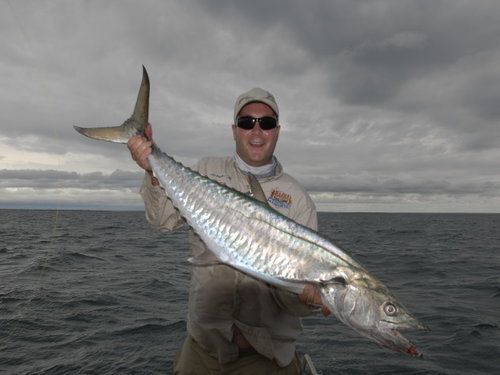
The Spanish mackeral as we know it but in Africa it’s a kingfish.
Your Spanish mackerel becomes the kingfish in Africa and the Aussie kingfish is known as the yellow tail in California, while the kingfish in Mauritius is apparently the giant trevally, which, by the way, is Karembisi in Swahili (Kenya). Falusi is also the Swahili name for the Dorado or mahi mahi which is more commonly called the dolphin fish in the USA. The Aussie kingfish/California yellowtail is also called an amberjack on parts of the east coast of the USA but in the Caribbean it is a snapper!
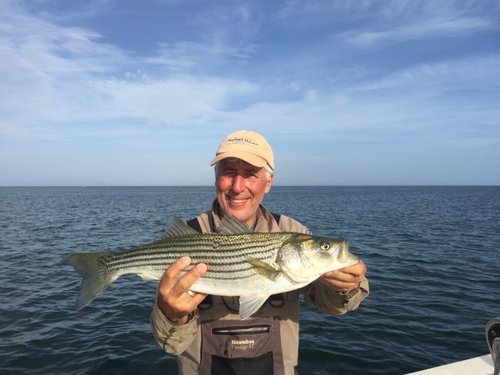
There are many different bass in the world but the American Striper is easy enough to recognise.
The ladyfish in America becomes the ninebone in Gambia and the speckled trout in the Everglades isn’t a trout at all, although it sort of looks like one but with a secondary, long dorsal fin a bit like an Atlantic Ling. None of this stops it being called the weakfish further north along the east coast of the same country.
I think the situation is a little different with bass as the books tell us that they are all perciformes, or perch-like fishes, belonging to one of three families – Centrachaidae or black basses including the largemouth; Latrolabracidae including the Asian species such as the Japanese and the blackfin sea bass and the Morondae which includes the European sea bass and the bigger American Stripers.
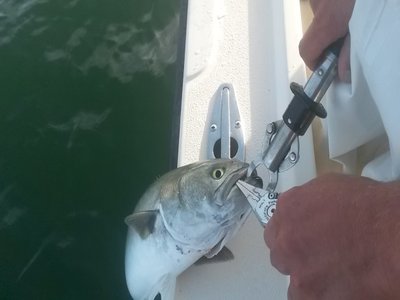
The Aussies call them ‘tailor’ but to the Yanks they’re bluefish
However, neither the Australian freshwater bass nor the big brutal Black Bass of Papua New Guinea fall into any of these categories although they are perciformes so I guess the word ‘bass’ was used as a global generalist term for any predator with spines!
And going back to the Dorado – not content with having three names (four if you count ‘dollies’) the South American freshwater fish of the same title which I have caught, is sometimes spelt ‘Dourado’…the same as the gilthead bream in Portugal.
Confused yet – you should be?
Anyway I thought I had put all this behind me and was back into the rhythm of catching familiar fish with names I knew and could pronounce. That was until I got chosen to lead a party of friends to the American East Coast in search of the famous striped bass. Thanks to one of our number having a particularly fine house in central London we were able to arrange a house swap on the gorgeous, but decidedly pricey island that is Martha’s Vineyard. This fabulous spot is not only a home from home for the Kennedy clan and other high rolling American political luminaries and celebs, it is also the venue for the annual striper and bluefish derby. These predators take fly, spinners and surface lures and we were really lucky to secure the services of the two best boat guides on the island – Jaime Boyle and Tom Rapone. The three days we had out in the boats with these guys were magical, with plenty of fish coming to surface poppers and streamer flies.
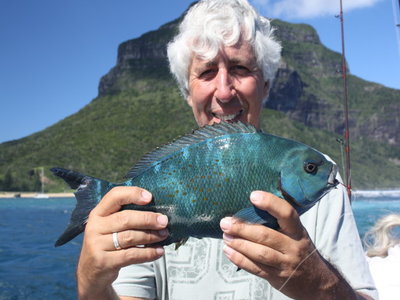
Go to Lord Howe Island if you want a proper bluefish!
Where we weren’t so lucky was with the weather as the tail end of Hurricane Joaquín slammed home halfway through the trip and our fishing was somewhat curtailed. Obviously that didn’t put us off and we manfully struggled on, shore fishing in 50 to 60 mph winds. Three hard day’s slog gave me a solitary striper to a shallow diving minnow in the half light on an in-coming tide race. My friends Nigel and Mark somehow managed a similar result on the fly by getting behind the strengthening wind, but to all intents and purposes our fishing was over.
What was interesting, however, were the other predators that came our way. We had some great fun with the false albacore tuna or ‘albies’ as they are known locally. I guess their proper name derives from looking like but not being a true tuna – they are a type of bonito – and because they are clearly a bit albino.
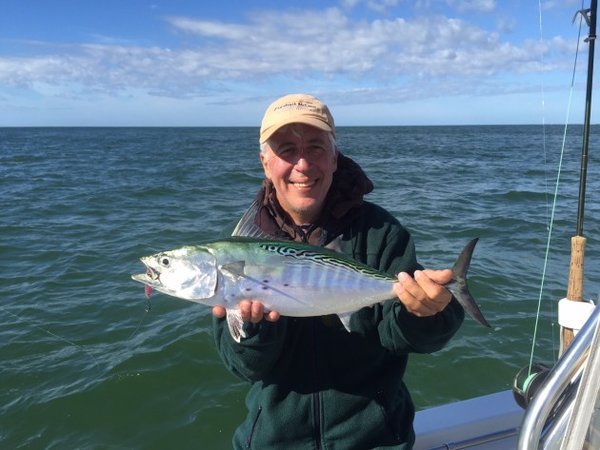
The albacore tuna isn’t actually a tuna but who cares? They look good and pull hard!
Anyway, everything came full circle when my first American bluefish was hoisted aboard the boat and I recognised those fierce some backward facing teeth that were the cause of more than a few lost hooks and lures during my time in Australia. What I thought was a new species to tick off my bucket list was in fact the dear old tailor masquerading as something altogether more exotic and not at all blue!
All of which goes to show that it matters not a jot what we call them, for surely it’s all about how they fight, look and taste, who we are with, and where we are at the moment the rod bucks and the reel screams?
Martin Salter is Fishing World’s Foreign Correspondent and author of Keep Australia Fishing. He now works as Campaigns Chief for the UK peak body – The Angling Trust.
Many thanks to Australian Fishing World for permission to reproduce this article.










